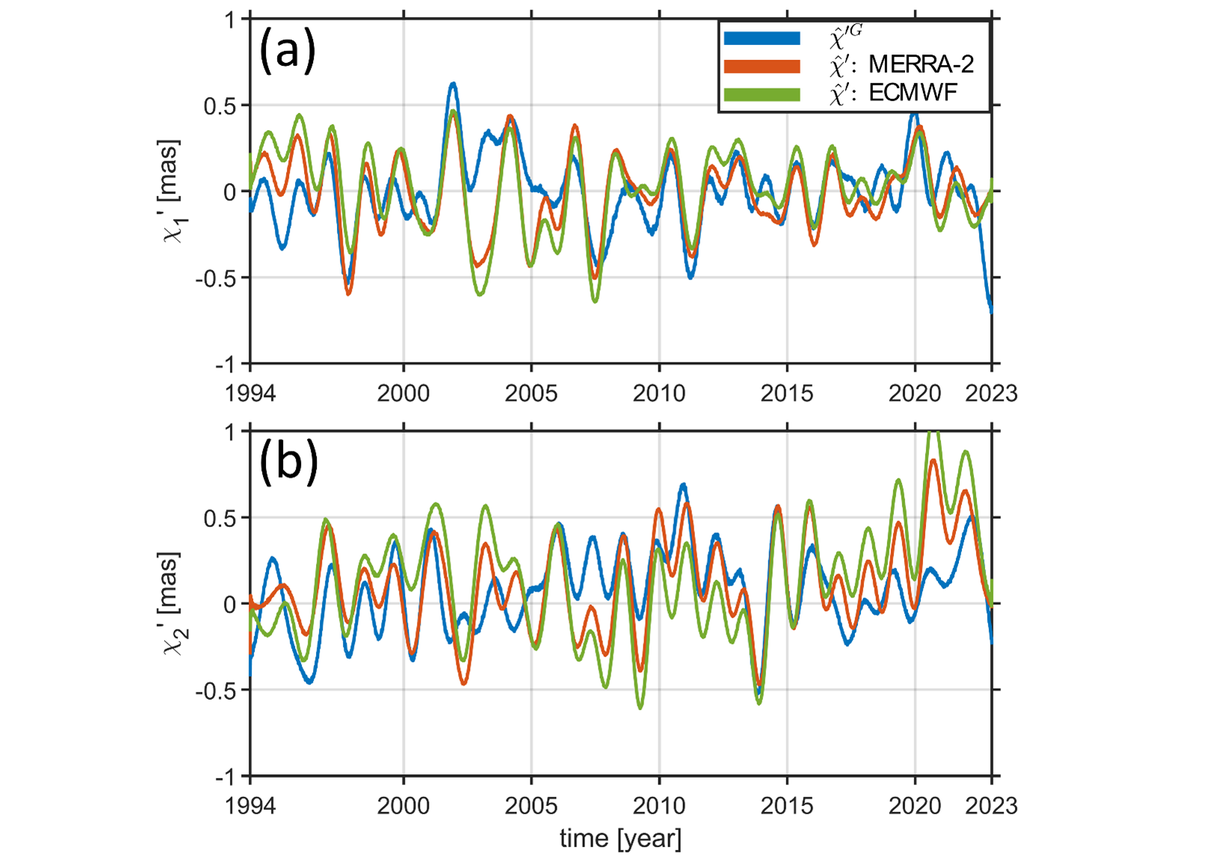New publication by Kiani Shahvandi et al. (2024)
"Revisiting the excitation of free core nutation" by Kiani Shahvandi et al. (2024)
Among the Earth's rotational normal modes, the Free Core Nutation (FCN) is the least understood in terms of geophysical sources of its excitation. However, Kiani Shahvandi et al. (2024) have thoroughly analyzed the variability of FCN since 1994 and shed light on its origin.
For this purpose, Kiani Shahvandi et al. (2024) generated new Atmospheric and Oceanic Angular Momentum (AAM and OAM) functions, which they called MERRA-2. These act as the so-called geophysical excitation. On the other hand, the so-called Celestial Pole Offsets (CPO) observations that are continuously monitored by very long-baseline interferometry are dominated by the FCN signal. Thus, using a dynamical model to deconvolve the FCN excitation from the observed CPO, the authors derived the so-called geodetic excitation. Comparing the latter with the aforementioned geophysical excitation, the authors deduced significant correlation, coherence, and power spectrum similarity. The generated MERRA-2 AAM and OAM series proved to be advantageous compared to the alternative ECMWF ones (see figure below). Hence, the authors concluded that AAM and to a lesser degree OAM are responsible for the excitation of FCN. These results have considerable implications for the studies of Earth's nutation.

Reference
Kiani Shahvandi, M., Schindelegger, M., Börger, L., Mishra, S., Soja, B. (2024). Revisiting the excitation of free core nutation. Journal of Geophysical: Solid Earth, 129(9), external page https://doi.org/10.1029/2024JB029583